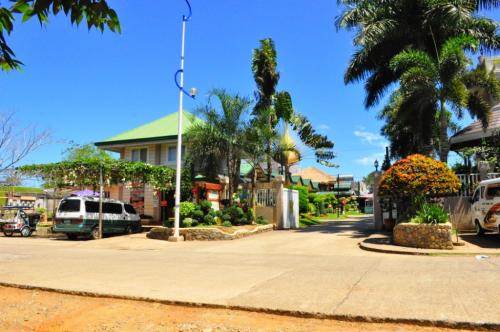Sabtang
Another church modeled after the one in Basco. Following an unfortunate incident in 1790, when Spanish emissaries sent to procure goods from the parish were killed by some natives, the people of Sabtang were forcibly resettled across the channel to Ivana and not allowed to return until 1844 when the foundations of the present church were laid. Source:Lakbaypilipinas.com
Pasuquin
The Ilocos Norte Sand Dunes (INSD), one of the Philippines' national geologic monuments, stretches along the coast from the Municipality of Currimao to the Municipality of Pasuquin in Ilocos Norte. It was declared a National Geological Monument on November 26, 1993. Though common in desert environment in higher latitudes, the INSD merited the title of a national monument because of its uniqueness in Philippine setting and its scientific and educational significance as a natural laboratory for geological studies. Source:Travelmart.net
Iloilo
Sandbar Island is a shifting white sand bar in the Bulubadiangan Island, Concepcion which shifts depending on the direction of the wind. The island's beach is ideal for swimming, snorkeling, fishing, and just about any water recreation activity. The island is not yet affected by commercialization and only basic cottages dot the island. There are no restaurants in the island so visitors have to bring their own food or have it cooked in the resort themselves. Source:Explore IloiloIloilo Online
Santa Barbara
Carved on a 35 hectares of plain and rolling hills, the 18-hole golf course in Brgy. San Sebastian claims an undisputed pre-eminence in golfing history. Built in 1907 by a group of British and Scottish expatriates working on the Panay Railway System, it distinguishes itself from other clubs as not only a place for recreation but a historical landmark as well. Present in the golf course are remnants of old golfing structures, evidence of the turn-of-the-century era structures. These old golfing structures and landmarks include sandboxes, 10th Tee Stone stairways, Alexander Ditch and Ponds, and Centuries-old Acacias. Also excavated from the one of the ponds in the golf course are rare 1800's golf balls which which was probably lost in play by the founders. Know more about the oldest golf course in the Philippines.
Santa Barbara
Santa Barbara Irrigation Dam is the first gravity irrigation dam in Iloilo, it was built in 1921. The dam is located in Brgy. Tungay. The water from the dam suplies the ricefields of some of the barangays in Sta. Barbara as well as other barangays in Pavia and Leganes. Read more about Santa Barbara's Irrigation Dam and other attractions.
Santa Barbara
The town's cemetery was constructed way back in 1845. The structure has survived the test of the earthquakes and is considered as one of the town's strongest structures. The landmark is located at Sitio Anggasan, Barangay DuyanDuyan. Know more about Santa Barbara and its attractions.
Arevalo
The story says that one day during the Spanish time, a farmer was plowing his field in Arevalo, Iloilo. Suddenly, his plow hit a hard object. He examined it and found it to be a 12-foot long black cross. Nearby, he also found a coronet. The cross was believed to be the one placed by the Jesuits inside their chapel in that place which they earlier abandoned because of the Muslim raids. That cross is now enshrined in the chapel of Barangay Santa Cruz where the famous Santa Cruz de Mayo was soon started. The santacruzan is the commemoration of the finding of the Cross by St. Helena in Jerusalem. It is capped by a colorful procession where the participants representing St. Helena (Santa Elena) and her son (as a small boy), Emperor Constantine the Great of Rome. The supporting casts are personifications like the Siete Virtudes de Maria by seven girls. Source:The News Today
Manila
The first Santa Cruz Church (often abbreviated to Sta. Cruz Church) was erected in 1608 by the Society of Jesus, better known as Jesuits, as a parish church for the swelling ranks of Chinese immigrants to Manila, many of whom had converted to the Catholic faith. The original structure was twice damaged by earthquakes, and totally destroyed in World War II. The present building, completed in 1957, is essentially Baroque and somewhat reminiscent of the Spanish-built mission churches in southern California. Source:Mytravelguide.com
Zamboanga City
Santa Cruz Island is famous for its pink sand beach. The island, which was declared a protected area years ago, is a perfect site for diving enthusiasts. Its crystal-clear water is also ideal for underwater photography. Santa Cruz Island is only around 20 minutes away from downtown Zamboanga. Source:Traveldojo.com
Romblon
Santa Fe Trail is located in Romblon, Philippines. The Santa Fe Trail is a perfect place for sight seeing in Romblon. With its zigzag road leading to Santa Fe, travelers can even enjoy the sights of nearby scenic spots of Tablas Strait and Looc Bay. Source: Romblon.homestead.com
